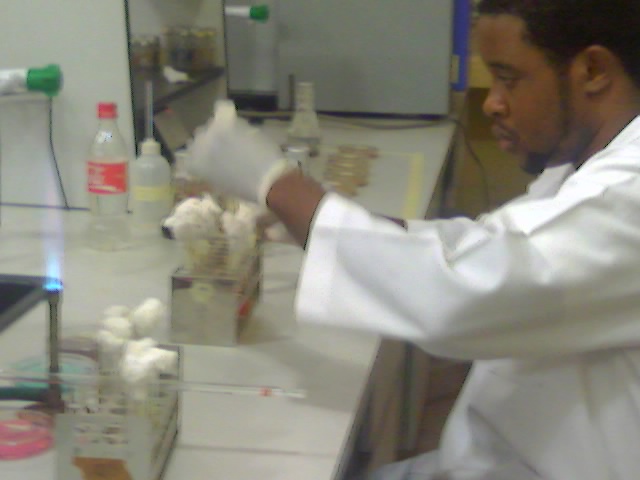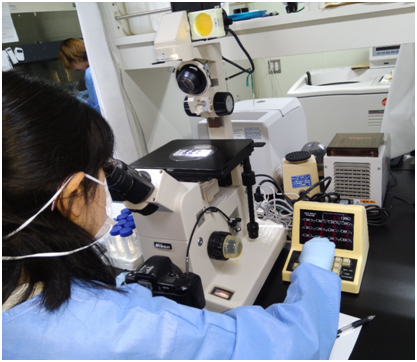Safety first is a general slogan that is obtainable in virtually every spheres of life. It goes to show that we should guarantee safety and the wellbeing of our work environment and those involved in the work so that accident will not occur. When accident occurs (especially when safety rules are not properly imbibed), it can cause several other disasters such as loss of money, loss of quality working time, loss of equipment and even loss of life in the worst case scenario.
In the microbiology laboratory safety is always first because the organisms we encounter in the laboratory while carrying out practical work may pose severe health risk if we fail to abide by the rules and regulations guiding the laboratory. Abiding by these set rules will ensure both the safety of the laboratory and the safety of the worker or researcher. When safety tips in the laboratory are observed, the laboratory working environment will be protected from possible health hazards that may ensue from the laboratory, and the health of other visitors to the laboratory will also be protected. Readers will also be exposed to the different techniques and equipment that are required or used to ensure safety in the microbiology laboratory.
Microbiologists especially those in the diagnostic, research and clinical laboratories engage in some hazardous activities that essentially deals with the isolation, detection and characterization of disease causing agents (especially highly infectious pathogenic microorganisms such as the causative agent of tuberculosis Mycobacterium tuberculosis,Ebola virus and human immunodeficiency virus amongst other microbes) with a view to the containment of infectious diseases in the environment and hospital community as well. Microbiologists in the academic environment and other related discipline also encounter different types of organisms which can become infectious to them when and if the proper infection control practices and laboratory safety precautionary measures are not followed in the course of their duty. It is very important that such activities are carried out with utmost caution and safety as much as possible. Otherwise, morbidity and mortality can ensue from non-cautious handling of infectious specimens and microbes at workplaces (i.e. in the laboratory). It is therefore important that microbiologists and other biological scientists who come in contact with infectious agents and specimens from patients and other non-clinical sources adhere strictly to the general safety guidelines of their professions when handling such infectious specimens from patients and other infectious agents including bacteria, viruses, parasites and fungi.
This practice which includes proper personal and environmental hygiene around the workplaces will go a long way to protect not just the health of the worker but the safety of the general public and the environment. A good and clean Microbiology Laboratory no doubt makes for a good microbiological research, teaching and learning. The microbiology laboratory whether in the hospital, research institute or an academic facility receives almost any type of specimens ranging from clinical to environmental samples. Such specimens or samples are processed and analyzed by microbiologists for the sole isolation of microorganisms which are later characterized with a view to solving some health mysteries. If such practices are not undertaken with the utmost precautionary measures, it is likely that the worker will become infected, and the pathogen may escape and spread within the laboratory and even to the community. Though, the microbiology laboratory may seem to be akin to other laboratories such as the biochemistry or biology laboratory, the microbiology laboratory is quite different and unique from these other laboratories in that the works and research carried out in them have significant role in our everyday life; and this is due in part to the ubiquity and importance of microorganisms to man and his environment. Therefore, it is paramount to keep this very important facility (i.e. the microbiology laboratory) clean andfree from avoidable contamination or dirt in order to be safe while working in them.
Safety in the microbiology laboratory therefore is the state of being safe and protected from any danger and harm that may arise from the processing of samples and other infectious agents. The Clinical Microbiology laboratory presents significant biological hazards for both workers in the laboratory and those that come into contact with them. Because microorganisms are ubiquitous and because they can be deadly to our health if appropriate precautionary measures are not imbibed to keep them at bay, it is very important that we observe all laboratory safety rules as we carry out practical work in the laboratory. This will not only help us to stay healthy; but it will help to minimize the exposure of healthcare workers to infectious agents and subsequent contamination and infection of people (especially patients) that come into contact with the microbiology working environment or its personnel. This will go a very long way in reducing the contamination and spread of nosocomial infections in the hospital environment and into the community.
The two most common causes of failure in keeping and observing safety measures while working in the microbiology laboratory are ignorance and carelessness. Students working in the microbiology laboratory (either in a hospital or academic institution) must learn and imbibe good laboratory practice in order to protect both themselves and others around the vicinity of the research. These good laboratory practices should include the use of hand gloves, working in a hood or biosafety laminar cabinet, use of protective shields for the eyes and nose etcetera. Knowledge they say is power; but if that knowledge is not put to work or harnessed to solving or preventing something bad, then that knowledge is no knowledge at all. In this same light, it is critical to enforce and put into practice some of the safety measures that shall be explored in this work for both our own benefit and the benefit of everybody especially the patients and others who we owe the responsibility of providing an undisputed laboratory test result. We can only carry out our work successfully if we are healthy and if our working environment is free from contaminating and infectious organisms. Taking careful precautionary measures based on an understanding of the risk involved can help minimize dangers of infection from suspicious clinical specimens and some laboratory hazards as well.
REFERENCES
Atlas R.M (2010). Handbook of Microbiological Media. Fourth edition. American Society of Microbiology Press, USA.
Balows A, Hausler W, Herrmann K.L, Isenberg H.D and Shadomy H.J (1991). Manual of clinical microbiology. 5th ed. American Society of Microbiology Press, USA.
Beers M.H., Porter R.S., Jones T.V., Kaplan J.L and Berkwits M (2006). The Merck Manual of Diagnosis and Therapy. Eighteenth edition. Merck & Co., Inc, USA.
Black, J.G. (2008). Microbiology: Principles and Explorations (7th ed.). Hoboken, NJ: J. Wiley & Sons.
Brooks G.F., Butel J.S and Morse S.A (2004). Medical Microbiology, 23rd edition. McGraw Hill Publishers. USA. Pp. 248-260.
Discover more from Microbiology Class
Subscribe to get the latest posts sent to your email.





